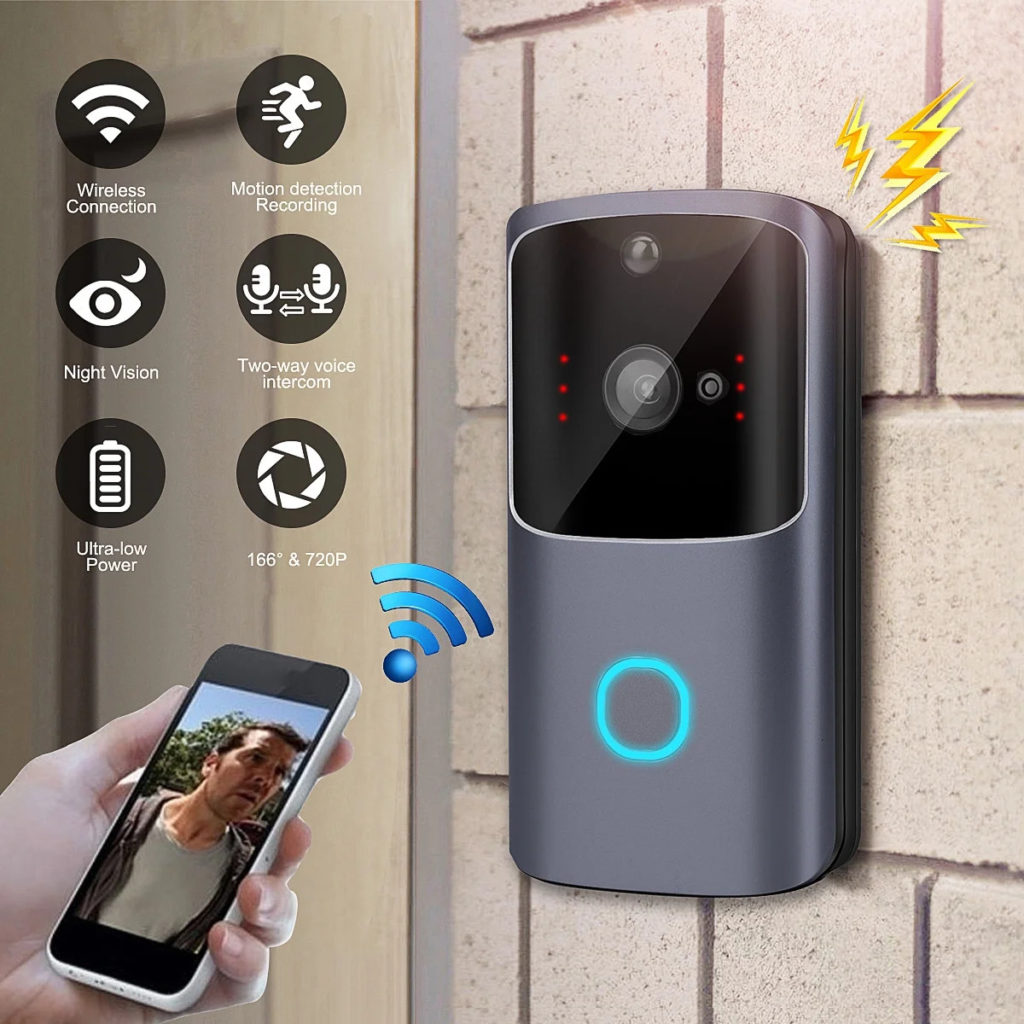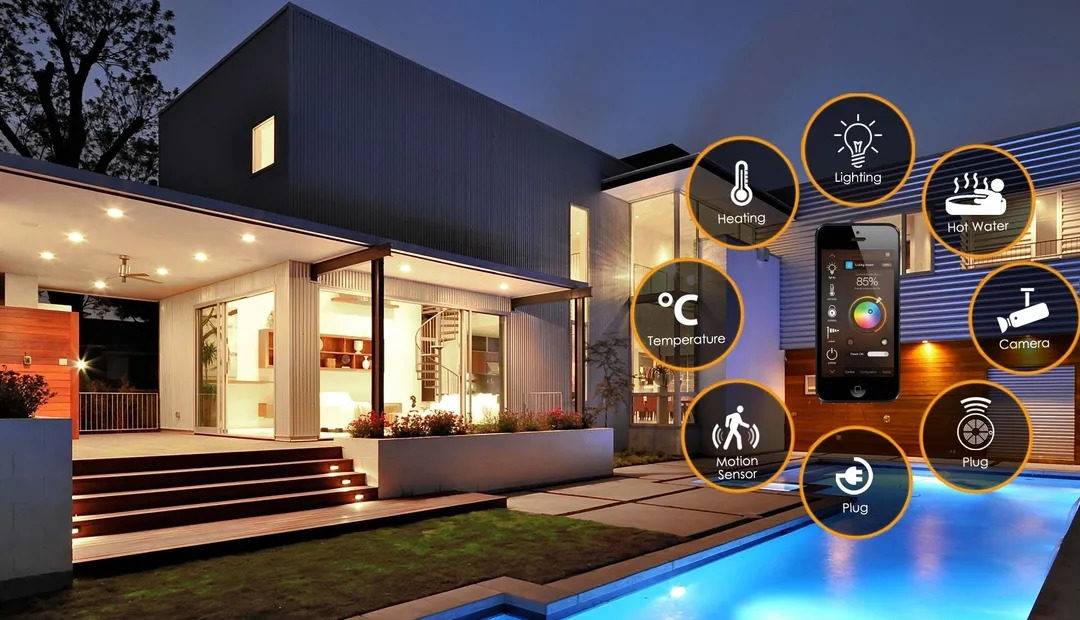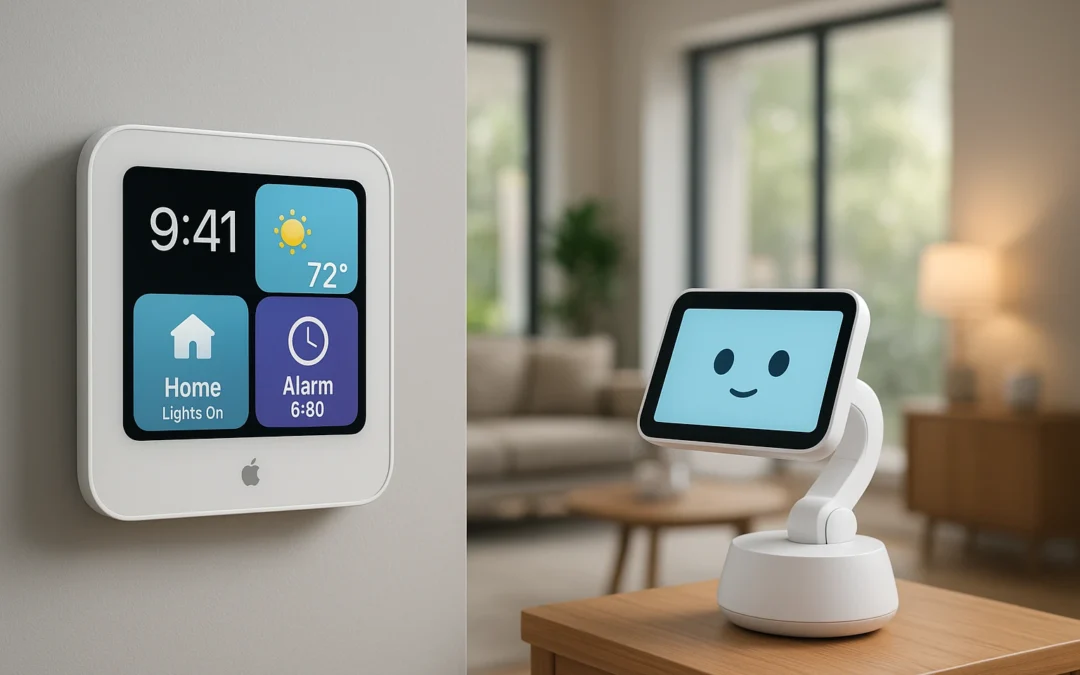The smart home landscape is about to witness a seismic shift as Apple prepares to launch its most ambitious Apple smart home devices lineup yet. With AI-powered displays, robotic assistants, and comprehensive security systems planned for 2026-2027, Apple is finally ready to challenge Amazon’s Ring and Google’s Nest dominance in the smart home market.
Why Apple’s Smart Home Strategy Matters in 2026
Apple’s entry into the smart home ecosystem has been cautiously measured until now. However, with CEO Tim Cook making smart home gadgets a strategic priority, the company is positioning itself to become “a force in the smart home segment” where it has traditionally lagged behind competitors.
The upcoming devices represent more than just new gadgets – they’re Apple’s answer to the growing demand for AI gadget tools that seamlessly integrate into our daily routines while maintaining the privacy and security standards Apple users expect.

Apple’s Game-Changing Smart Home Devices
1. Wall-Mounted Smart Display (J490) – Mid-2026
Apple’s flagship smart home device, internally codenamed “J490,” will revolutionize how families interact with their connected homes. This 6-7 inch square iPad-like display is designed to be the central command hub for your entire smart home ecosystem.
Key Features:
- New “Charismatic” Operating System – Unlike iOS, macOS, or tvOS, this system is specifically designed for multi-user households
- AI-Powered Face Recognition – The front-facing camera automatically provides personalized content for each family member
- Enhanced Siri Integration – Powered by large language models for more natural conversations
- Widget-Centric Interface – Clock faces and app widgets create an intuitive user experience
- Voice-First Control – Despite having a touchscreen, Apple expects primary interaction through voice commands
The device was originally slated for 2025 but has been delayed due to technical challenges with Siri’s enhanced AI capabilities. This delay suggests Apple is prioritizing a polished experience over rushing to market.
2. Tabletop Robot Assistant (J595) – 2027
Apple’s most ambitious project enters the emerging home robotics market with a $1,000 tabletop robot that combines an iPad-like display with a robotic arm capable of 360-degree movement.
Revolutionary Features:
- AI-Driven Personality – The robot will feature conversational AI that adapts to your family’s preferences
- Automatic Positioning – Follows users during video calls and adjusts viewing angles for different tasks
- Smart Home Command Center – Controls all connected devices through voice and visual interfaces
- Home Security Integration – Works as an intelligent security monitoring system
This device positions Apple to compete directly with Amazon’s invite-only Astro robot while offering the premium design and integration Apple customers expect.

Comprehensive Home Security Ecosystem
Beyond smart displays, Apple is developing a complete home security system to directly compete with Ring and Nest platforms.
Battery-Powered Security Cameras
Apple’s security cameras will feature:
- Extended Battery Life – Several months to a year on a single charge
- Facial Recognition Technology – Identifies family members and frequent visitors
- Infrared Sensors – Superior night vision capabilities
- Home Automation Integration – Automatically controls lights and music based on room occupancy
Smart Video Doorbell
The upcoming video doorbell will include:
- Facial Recognition – Identifies visitors before they ring
- Wireless Deadbolt Integration – Extends Apple’s Home Key functionality
- Seamless HomeKit Integration – Works with existing Apple smart home setups
How Apple’s Approach Differs from Competitors
Privacy-First Design
Unlike competitors who rely heavily on cloud processing, Apple’s smart home devices will likely process much of the AI functionality locally, maintaining the company’s commitment to user privacy.
Ecosystem Integration
The new devices will work seamlessly with existing Apple products, from iPhones and iPads to Apple TV and HomePod, creating a unified smart home experience that’s difficult for competitors to match.
Premium User Experience
While Amazon focuses on affordability and Google emphasizes AI capabilities, Apple’s approach prioritizes polished user interfaces and premium build quality that justifies higher price points.
What This Means for Current Smart Home Users
For Apple Ecosystem Users
If you’re already invested in Apple’s HomeKit platform, these new devices will significantly enhance your smart home capabilities. The face recognition and personalization features will make your home truly intelligent.
For Android Users
Apple’s typically requires commitment to their ecosystem, so Android users may find limited functionality compared to Google Nest or Amazon Echo devices.
For Smart Home Beginners
Apple’s reputation for user-friendly design makes their upcoming smart home gadgets for beginners particularly appealing, especially for those prioritizing privacy and security.

Preparing for Apple’s Smart Home Future
Start Building Your Foundation Now
To prepare for Apple’s 2026-2027 smart home launch, consider:
- Upgrade to HomeKit-Compatible Devices – Ensure your current smart home gadgets work with Apple’s ecosystem
- Invest in Apple TV or HomePod – These will likely serve as essential hubs for the new devices
- Plan Your Home Layout – Consider wall mounting locations for the J490 display
- Budget for Premium Pricing – Apple’s devices typically command higher prices than competitors
Integration with Existing Technology
The new devices will work alongside your current voice-controlled devices and AI wearables, creating a comprehensive smart home ecosystem that extends beyond just home automation.
The Competitive Landscape in 2026-2027
Amazon’s Response
Amazon will likely accelerate Astro robot development and enhance Ring’s AI capabilities to compete with Apple’s premium offerings.
Google’s Strategy
Google may focus on improving Nest’s AI integration and expanding their Assistant capabilities across more device categories.
Market Implications
Apple’s entry validates the premium smart home market and suggests we’ll see rapid innovation across all major platforms through 2027.
Conclusion: Apple’s Smart Home Revolution Begins
Apple’s upcoming smart home devices represent more than just new gadgets – they signal the company’s serious commitment to capturing market share in the rapidly growing home automation sector. With AI-powered displays launching in mid-2026 and robotic assistants following in 2027, Apple is positioning itself to transform how we interact with our living spaces.
The delays in the timeline suggest Apple is taking time to perfect the experience rather than rushing incomplete products to market. For consumers, this means the devices that eventually launch will likely offer the polished, intuitive experience Apple is known for.
Whether you’re a longtime Apple user or considering your first smart home investment, Apple’s 2026-2027 lineup promises to bring premium design, advanced AI capabilities, and robust privacy protection to the connected home market.
Ready to start building your smart home foundation? Explore our comprehensive guides on smart home gadgets for beginners and voice-controlled devices to prepare for Apple’s revolutionary smart home future.
Stay updated with the latest gadget news and reviews at Gadget400.com. Follow us for more insights on emerging technology trends and smart home innovations.



